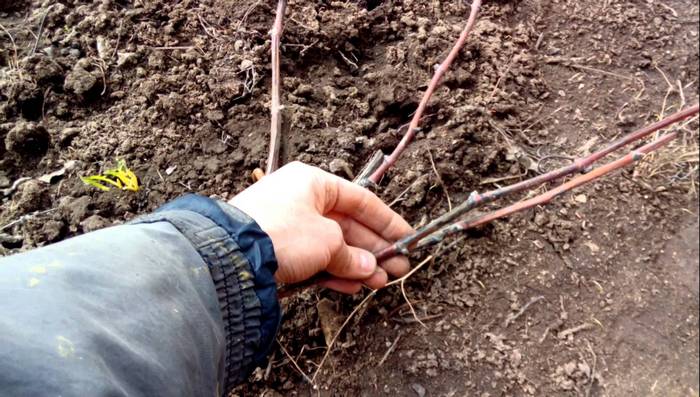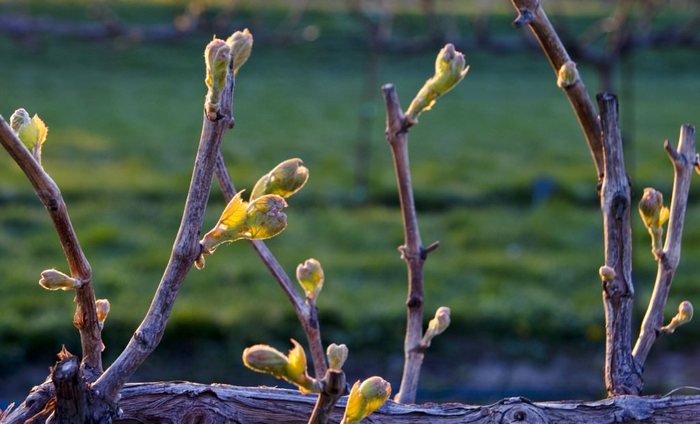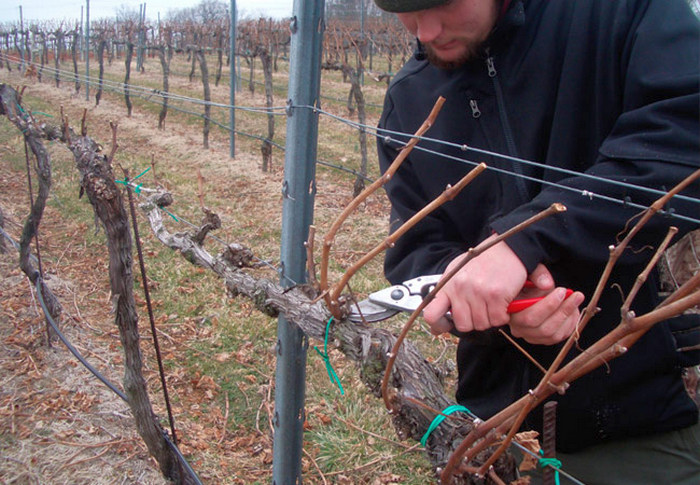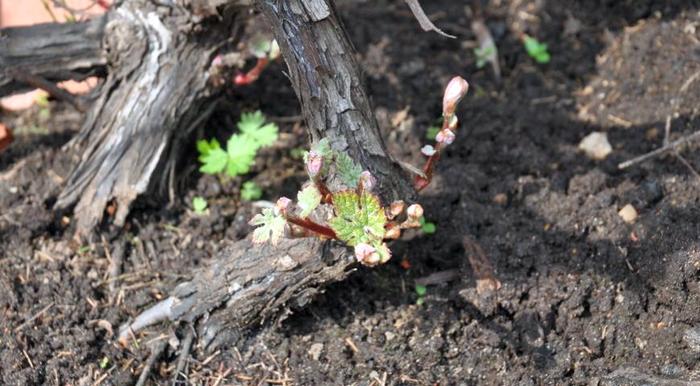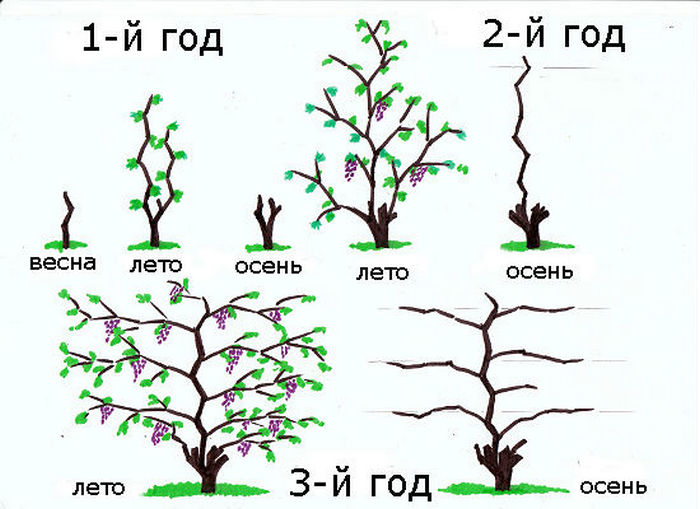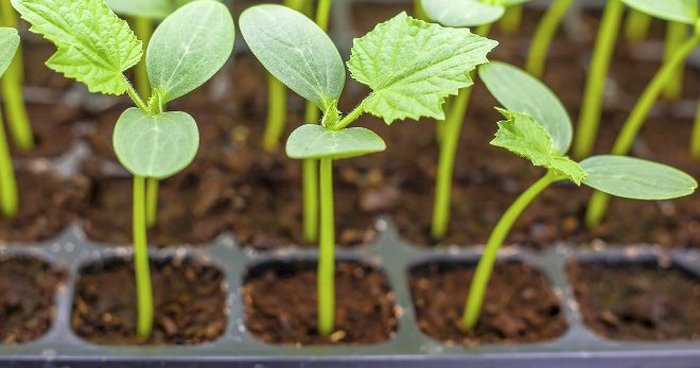Content:
Any grower should know not only how to properly care for the crop, but also how to revive the grapes after winter, and if the grapes have dried up after winter, what to do.
When should grapes wake up
Before you start looking for an answer to the question of how to wake up grapes after winter, you should figure out when, in fact, this should happen.
Different grape varieties sleep for different amounts of time. The area in which the vineyard is cultivated also plays a significant role in this matter. If the region is southern, the time when any grape variety wakes up comes earlier.
It affects the awakening and location of the kidneys by the fact whether they receive sufficient amounts of nutrients and moisture.
If everything is normal, the question of how to wake up the grapes after winter will not arise in principle. In general, in the south of Russia, culture may begin to wake up in April, and in more northern regions, it will begin to awaken in May.
In terms of duration, the growing season lasts from 30 to 50 days. It is influenced by the following external factors:
- number of warm days;
- the amount of precipitation;
- the degree of warming up of the soil.
In many ways, the ability of grapes to bloom with the onset of spring is influenced by the fact how quickly the soil awoke. In some cases, the organization of a heater from bottles (made of dark glass), which is dug into the soil around the root system, helps to revive the plant. The sun heats up the container, and it, in turn, heats up both the earth and the root. This is important because it is the rhizome that ensures the normal growth and development of the culture.
To worry that the grapes did not wake up in the spring, what to do in such a situation should be started when all the recommended dates (April or May) have already passed.
Reasons for untimely awakening
Viticulture is a serious craft that requires a range of skills and in-depth knowledge. Grapes are often problematic for beginners in the cultivation of crops from the very beginning of spring. At this time, many, without waiting for the plant to begin to bud, begin to panic and look for a way to still wake up the grapes.
Unfortunately, practice shows that the situation when the bud does not want to bloom is by no means uncommon. The reasons for this problem are not always obvious, especially if everything necessary for the culture to survive the long winter period has been done.
Of course, the reason that the grape variety could not wake up may lie in an excessively harsh winter, but this is unlikely to reassure anyone. In addition, such an explanation is hardly suitable for frost-resistant varieties that can overwinter in any frost and for plants that are carefully sheltered during the cold season.
The long-term practice of viticulture and horticulture clearly demonstrates that sharp temperature drops negatively affect any crops, including winter-hardy ones. Cold torrential rains in the spring can also help keep the seedling slow to wake up.
If we talk about the human factor, incorrect cropping of the eyes (for example, they are cut too short) can cause the plant to dry out.
In most cases, the need to wonder why the grapes do not wake up what to do does not arise with proper plant care.
Ways to awaken grapes
You can spend a lot of time typing in the Internet queries like "grapes dried up after winter what to do" or "grapes did not wake up after wintering what to do with them", but still not solve the problem.
It is not enough to know the reason why the grapes did not wake up in the end, it is much more important to be able to restore it in a timely manner and wake it up from sleep.
The procedure can be started on any warm day, when the snow has already melted, and the air temperature is firmly kept at positive levels. It was at this time that the following should be done: remove the shelter (if any) from the vine and let the plant dry out in the wind.
Any attempts to awaken dry grapes begin with measures for resuscitation of the root system, and only after it - the ground part of the vine.
After removing the shelter under the grapes, lay a dark film. It will speed up the heating of the soil and help wake up the root system.
Another correct way to warm up the soil as soon as possible is to pour hot water over it.
Increase the water temperature gradually - by about 10 degrees every day, gradually reaching 100 degrees.
Do not forget that spring is a rather unstable season. It is very warm during the day and cold at night. Often the problem that the culture does not want to start growing cannot be attributed to the fact that the grapes wintered badly. What to do. The vineyard during this period should be protected from both bright sunlight and night cold.
Care after waking up
For a crop such as grapes, care in the spring after the end of winter is especially significant. In this regard, it is incredibly important to know exactly what to do with the grapes in the spring after opening.
After the grapes have managed to get up after winter, it's time to process the vineyard so that the culture can grow calmly without the risk of being damaged by pests and diseases.
Before processing, the vine should be cut and tied up. This should be done before the first leaf begins to grow, otherwise the grapes may begin to dry out. Cropping is done as follows:
- all broken, dried out branches that are beginning to disappear and thickening the crown are subject to removal;
- the thicker the vine is initially, the longer the branches can be left;
- the cut should be made with a sharp special garden tool;
- you need to understand where exactly the shoots should be cut off - according to the rules, this is done about 3 cm above the eye and along the internode;
- to form a fruit link is allowed only from a strong, healthy and normally developed vine;
- it is recommended to leave annual vines for fruiting, the diameter of which varies in the range of 6-12 mm;
- completely remove last year's vine, which has already managed to bear fruit.
Special attention should be paid to the formation of the bush. Usually only one vine is grown in the first year. It must be powerful and strong in order to further function as a reliable shoulder for young shoots.The next year, three vines can be grown from a new shoulder with an interval of 80 cm. Their length should not exceed the same 80 cm. These will be sleeves. In the future, new vines need to be formed on them. The active formation of the bush begins from the third year. In this case, all kidneys on the shoulder and all but one on the sleeves are subject to removal.
To prevent the development of diseases, it is most effective to use modern fungicides and insecticides. Nitrofen, Karbofos and Oksikhom give excellent results. Experienced growers also recommend spraying plants with a solution based on copper (iron) sulfate and urea. In the fight against fungal diseases, the Bordeaux liquid will demonstrate the best effect, which should be shed, first of all, the roots of plants.
In the spring, mineral fertilizers go especially well, activating the growth of crops and the development of green mass. You can use superphosphate or ammonium nitrate.
As for the garter, it can be performed in a vertical or inclined position on a trellis. If necessary, it is necessary to update the wire on trellis structures, as well as support posts (in the first place). You should not neglect such standard agronomic procedures as systematic weeding, watering, loosening the soil, as well as mulching grapes with organic matter.
To get a decent harvest of grapes in the fall, you cannot do without the obligatory care of the cultivated vineyard in the spring, after the protective coating has been removed from the plants.
After all, even if the vineyard survived the winter perfectly and did not have to make any efforts to awaken it, without competently carried out restoration measures, coupled with full and timely care, it makes no sense to count on a positive result.
